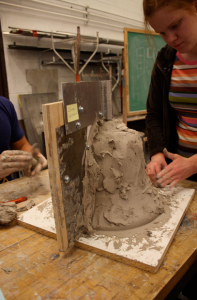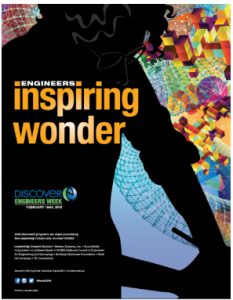Bobsled Blitz
Activity developed by The Tech museum of innovation in San Jose, California. Click HERE for PDF of activity. Click HERE for PDF of engineering design process worksheet for bobsled activity adapted by the Museum of Science, Boston’s Engineering is Elementary.
Summary
Students in grades 3 to 12 explore the effects of gravity, friction, and air resistance upon acceleration by using the engineering design process to design, build, and test their own bobsleds with the aim of reducing run times with each attempt.
Grade level: 3-12
Time: Three 30-45 minute sessions
Learning objectives
After doing this activity, students should be able to:
- Demonstrate their knowledge of potential and kinetic energy
- Iterate on a design that decreases run times by reducing friction and drag
- Explain design considerations based on concepts of aerodynamics, acceleration, velocity, and terminal velocity
- Use the design process to meet an engineering challenge
Learning standards
Next Generation Science Standards
Engineering Design:
- Grades 3-5, ETS1-1, ETS1-2, ETS1-3;
- Grades 6-8: MS-ETS1-1, MS-ETS1-2, MS-ETS1-3, MS-ETS1-4; Develop a model to describe that when the arrangement of objects interacting at a distance changes, different amounts of potential energy are stored in the system; Construct, use, and present arguments to support the claim that when the motion energy of an object changes, energy is transferred to or from the object. Define the criteria and constraints of a design problem with sufficient precision to ensure a successful solution.
- Grades 9-12: HS-ETS1.1- 1.3 Analyze a major global challenge, design a solution given qualitative and quantitative criteria and constratins, and evaluate and improve solutions.
Physical Science: Grade 3: 3-PS2-1; Grade 4: Physical Science 4-PS3-1 and 4-PS3-4; Grade 5: 5-PS2-1; Grades 6-8: MS-PS2-2, MS-PS3-1, MS-PS3-2, and MS-PS3-5; High School: HS-PS2-1, HS-PS2-6, HS-PS3-2, and HS-PS3-3
Speaking and Listening: Grade 3: SL.3.1b-d, SL.3.3, SL.3.4a; Grade 4: SL.4.1b-d, SL.4.4a; Grade 5: SL.5.1b-d, SL.5.4; Grade 6: SL.6.1b-d; Grade 7: SL.7.1b-d; Grade 8: SL.8.1b-d; Grade 9-10: SL.9-10.1b-d Grade 11-12: SL.11-12.1.b-d
Engineering Connection
Have you been in a car when the driver slammed on the brakes and the car skidded or started to chatter? That vibration is caused by the anti-lock brake system (ABS). Engineers know that a non-skidding wheel has more traction than a skidding wheel, so they designed a braking system that prevents the brakes from locking up, which can cause a vehicle to slide. By not skidding, the static friction is maximized and the driver can stop the car quickly without loss of control.
There’s lots of engineering in bobsleds, from the aerodynamic body made of sturdy but lightweight carbon fiber materials to the
Engineers also are developing plastic bobsled tracks that not only mimic the same low-friction surface as ice when lightly lubricated with water but also heal themselves after the blade passes over. Another advantage: Plastic tracks make bobsled competitions possible year ’round, even in warm places, and reduce the environmental impact. They also cost less than today’s ice versions: around $5 million versus nearly $100 million.
The tracks, which are being studied by Jan-Anders Mansson, a professor of materials and chemical engineering at Purdue University, and software engineering Josh Dustin, are expected to premier at the 2020 Youth Olympic Games in Switzerland.
Materials
Materials can be limiting or inspirational to students! Have a wide variety of materials to promote a diversity of solutions.
“Recycled items” are really useful: 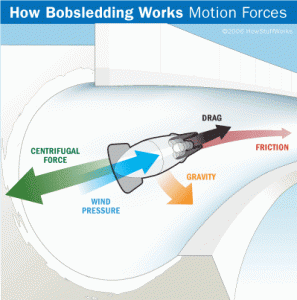
- Old mouse pads
- Wood scraps
- Boxes
- Cardboard tubes
- Strawberry baskets
Class Supplies to Share
- Plastic Drinking Straws
- Craft Sticks
- Wooden Skewers
- Toothpicks
- Paper Clips
- Twist Ties
- Rubber Bands
- Pipe Cleaners
- Masking Tape
- Scissors
- Cardstock
- Cardboard
Testing Supplies
- Stopwatch
- Scale
- Rain Gutters (race track)
- Wood blocks (braces for the rain gutters)
Procedure
Before the activity
Make a multiple-lane bobsled course out of plastic rain gutters. Mark the start and finish lines with a dark marker, and brace the lanes with a wooden block.
Session 1: (30-45 minutes)
1. Introduce the Challenge: Design and build a bobsled using the provided materials to race down the rain gutter track.
2. Introduce the Constraints: • Each bobsled must weigh 8 grams or less. • Bobsleds must be able to fit behind the black line on the racetrack. • You must use only the materials provided. • Everyone on the team must be included (2-4 engineers).
3. Build: Give students about 20 minutes to build. Instructor should ask open-ended questions to help guide students through the design process, but should also allow students space to tinker.
4. Demonstration: Have students demonstrate their bobsled designs. If students have not completed their device, or their device did not function as expected, ask them how the device would have worked.
5. Reflection: Have each group of students explain their design strategy and how their bobsled uses energy, forces, and motion to complete the track.
The instructor should ask leading questions to get at the science behind the designs. For example: When the bobsled reaches the bottom of the track and stops, what kind of energy does it have? Potential? Kinetic?
What kind of energy does the bobsled have if it is only halfway down the track? How would a heavier bobsled affect the run? How would surface area affect your bobsled? How does shape affect your bobsled? Questions about specific design choices: Why did you use a…? What does the… do? How did you solve…?
Session 2: Directed Instruction (30-45 minutes) 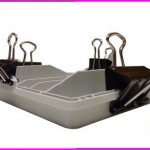
1. Questions for teaching points:
How would you describe the energy associated with your bobsled? • What would happen if you make your bobsled heavier? • What would happen if more of your bobsled were in contact with the track? • Is it possible to achieve a faster run-time just by changing the shape of your bobsled?
2. Friction: When things rub against each other, they generate friction. Materials that slide down the track more easily have less friction, less energy is lost, and so the track time is faster.
Demonstration Ideas: Have students rub their hands together. Do they feel the heat? That is the energy from the movement of their hands being converted to thermal energy (i.e. heat) through friction. Potential energy that becomes heat cannot become motion. Low friction means less energy is lost to heat, leaving more energy for motion; therefore, the bobsled goes faster. o Get a paperclip and a rubber band. Ask which one they think will go faster down the track. Drop the paperclip in one track and the rubber band in the other. The paperclip will slide down the track while the rubber band will stick at the top. Which one has higher friction? The rubber band. Things with more friction are “stickier.” Kids seem to have an innate understanding that sticky things don’t move well.
Questions: How does material choice affect the bobsled’s race time? How does surface are affect the bobsled’s race time?
3 Aerodynamics: Air resistance, or air friction. When something moves through air, the air molecules rub against the object and create air friction. Friction slows an object down. Air friction is one form of drag. The larger the area hitting the air, the greater the number of air molecules hitting the object at any moment in time, and more friction is created. More friction means the object slows down more. This is why a parachute works.
Demonstration: Get two pieces of paper. Reduce the surface area of one piece by crumpling it up. Drop the two pieces of paper. The crumpled paper will hit the ground first. Gravity accelerates the two objects toward the earth at the same rate. The crumpled paper goes faster because there is a smaller surface for the air to hit, which means less air friction, which means it loses less speed.
Additionally: The other factor that affects air resistance is the object’s velocity. If an object can pass through more air space in a given amount of time, it will collide with more air molecules than the same object with a slower velocity. The more air molecules it hits, the more air friction is created and the more speed is lost.
Questions: How does shape affect a bobsled’s run time? What shapes are more effective? o What other vehicles make design considerations based on aerodynamics? What shapes do these vehicles utilize?
4. Terminal Velocity: Acceleration due to gravity = Deceleration due to air resistance. As an object falls it will continue to speed up. As it speeds up the force due to air resistance will increase. That force is accelerating the object in the opposite direction of its movement, or causing it to decelerate. When the force of air resistance matches the force of gravity, the object is being accelerated and decelerated at the same rate. That means there is no acceleration at all. It doesn’t mean the object stops falling. It just stops falling faster.
Demonstrations: Get a stack of cards (index or playing). Rubber band the stack together except for one card. Point out the bottom of the stack of cards and the single card have the same surface area that will hit the air when they are dropped. Hold the stack of cards and the single card at the same height and drop them. The stack of cards will hit the ground first. This is because the stack of cards has more mass so it takes longer to reach the speed that will create enough air resistance to counteract the acceleration due to gravity. If you dropped the single card and the stack in a vacuum they would fall at the same rate.
Get an empty matchbox and a matchbox full of pennies. Slide them both down the track. The matchboxes have the same profile to affect their aerodynamics. Because the box with the pennies is heavier, it will slide down the track faster.
Questions: How does terminal velocity affect the bobsleds? NOTE: We want our bobsled to accelerate as long as possible so it reaches a high speed. Gravity will speed the bobsled up. Air resistance and friction will slow it down. Eventually, gravity will balance air resistance and friction and stop acceleration. This will be your terminal velocity. The bobsled cannot go faster than this. We want to delay reaching terminal velocity as much as possible so the bobsled accelerates as long as possible. A heavier bobsled will create a larger gravitational force (to create the same acceleration). It will take more air resistance to counteract the larger force of gravity in a heavy object. The more air resistance you need, the faster the object must be going to create it, the longer the bobsled must accelerate to reach that speed. This is why we want to add weight to our bobsleds.
Session 3: Bobsled Redesign and Reflection (30-45 minutes)
1. Introduce the Challenge: Redesign and build a bobsled using the provided materials to race down the rain gutter track in order to decrease the initial run time.
2. Reintroduce the Constraints: • Each bobsled must weigh 8 grams or less. • Bobsleds must be able to fit behind the black line on the racetrack. • You must use only the materials provided. • Everyone on the team must be included (2-4 engineers).
3. Build: Give students about 20 minutes to build. Instructor should ask open-ended questions to help guide students through the design process, but should also allow students space to tinker.
4. Demonstration: Have students demonstrate their bobsled designs. If students have not completed their device, or their device did not function as expected, ask them how the device would have worked.
5. Reflection: Have each group of students explain their design strategy and how their bobsled uses energy, force, and motion to complete the track. The instructor should ask leading questions to get at the science behind the designs.
Questions: How did you change your original design? What affect did this/these change(s) have upon the performance of your bobsled? Did you do anything specific to increase the aerodynamics of your bobsled? Did you do anything specific to help your bobsled accelerate longer (i.e. decrease friction, delay terminal velocity by adding weight and increasing aerodynamics)? If you had more time what would you add, change, or do differently? o If you had another opportunity to redesign, do you feel you could make your bobsled run even faster?
Nigeria is sending its first bobsled team to the Pyeongchang Olympics. Jamaica’s 1988 bobsled team, subject of the movie Cool Runnings, says its debut at the Calgary Olympics was an even crazier experience than depicted in the film.
- Change the angle and length of the bobsled track. Investigate the results of increasing potential energy (length and height of hill). How does it effect the acceleration and velocity of the bobsled?
- Restrict the weight. How does that affect the bobsled’s performance?
- Have students identify where on the track their bobsled has zero kinetic and potential energy.
- Have students graph their results.
Activity Scaling
- For upper grades, have students plot their results using a computer. Depending on their skill level, have them add a trend-line to their plots and display their equations.
- For lower grades, run through a sample calculation to find μ.
Resources
How Bobsledding Works An article by “How Stuff Works” on bobsledding provides information on the rules of the sport, technical information about courses and sleds, and the physics of how everything works.
Aerodynamics An article posted to “Live Science” that explains the basics of aerodynamics as it applies to a variety of vehicles.
Engineering Faster and Safer Bobsleds A National Science Foundation video explaining the engineering challenges associated with making sleds faster and tracks safer. The video is narrated by Michael Scully, of BMW DesignWorks USA, and mechanical engineer Mont Hubbard, professor emeritus at the University of California, Davis.
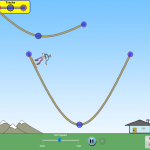 PhET Interactive Simulations. Interactive simulations for science and math from the University of Colorado, Boulder, includes an interactive skatepark (or snowboard half-pipe) graphing simulation that lets students manipulate a ramp in order to discover force, energy, and work.
PhET Interactive Simulations. Interactive simulations for science and math from the University of Colorado, Boulder, includes an interactive skatepark (or snowboard half-pipe) graphing simulation that lets students manipulate a ramp in order to discover force, energy, and work.
Science of the Winter Olympics: Banking on Speed. National Science Foundation and NBCLearn video explains how the U.S. Men’s Bobsled Team hopes to win gold for the first time in decades at the Vancouver Olympics with the help of scientists, phyiologists, physicist George Tuthill of Plymouth State University, and bobsled designer Bob Cuneo.
Video of going down bobsled track. From Pyeongchang 2018 Olympic Bobsleigh official site.
Related activities
Energy Skate Park (grades 9-11) TeachEngineering hands-on activity in which students experiment with an online virtual laboratory set at a skate park. They make predictions of graphs before they use the simulation to create graphs of energy vs. time under different conditions. This simulation experimentation strengths their comprehension of conservation of energy solely between gravitational potential energy and kinetic energy,
Riding the Gravity Wave (grades 5-7) Students write a biographical sketch of an artist or athlete who lives on the edge, riding the gravity wave, to better understand how these artists and athletes work with gravity and manage risk. Note: The literacy activities for the Mechanics unit are based on physical themes that have broad application to our experience in the world — concepts of rhythm, balance, spin, gravity, levity, inertia, momentum, friction, stress and tension.
Sliders (grades 7-9) TeachEngineering hands-on activity helps middle-school students understand static and kinetic friction and the equation that governs them. They also measure the coefficient of static friction experimentally.
Sliders (Grades 9-11) TeachEngineering hands-on activity helos high school students understand static and kinetic friction and the equation that governs them. They also measure the coefficient of static friction experimentally.
Trash Sliders (Grades 6-9) University of Virginia engineering professor Larry Richards developed this hands on engineering design challenge to help students learn the fundamentals of engineering design, sustainability, suspension systems, and the physics of forces and motion while expressing their creativity by building a vehicle out of recycled trash that is capable of transporting liquid over rough terrain with as little spillage as possible.
Filed under: Class Activities, Grades 6-8, Grades 9-12, Grades K-5 | Comments Off on Bobsled Blitz









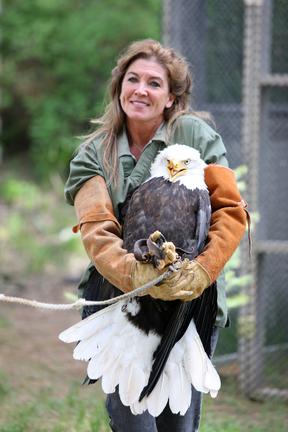
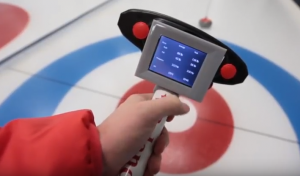
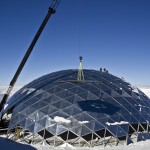
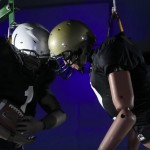
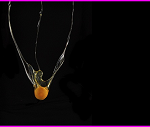
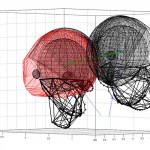
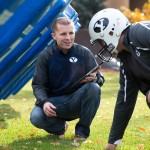
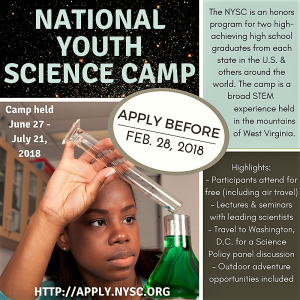
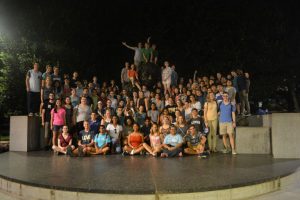
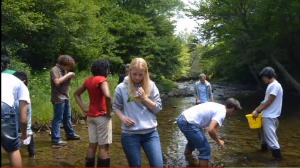


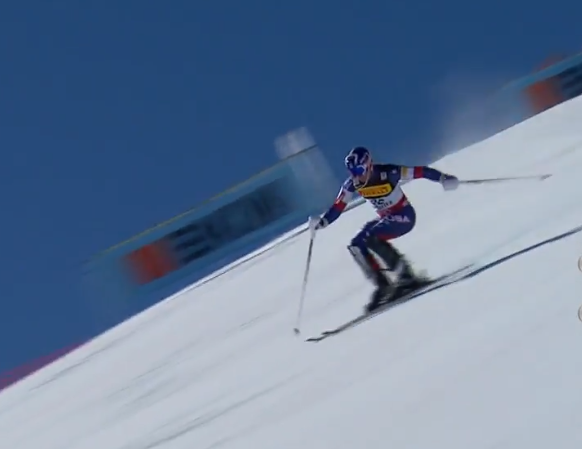
 ialis, a Stanford mechanical engineering grad, took home a silver medal in foil from Rio and a bronze in team foil, while Stanford engineering and management science major Maya DiRado won four medals – including two gold – in swimming.
ialis, a Stanford mechanical engineering grad, took home a silver medal in foil from Rio and a bronze in team foil, while Stanford engineering and management science major Maya DiRado won four medals – including two gold – in swimming.